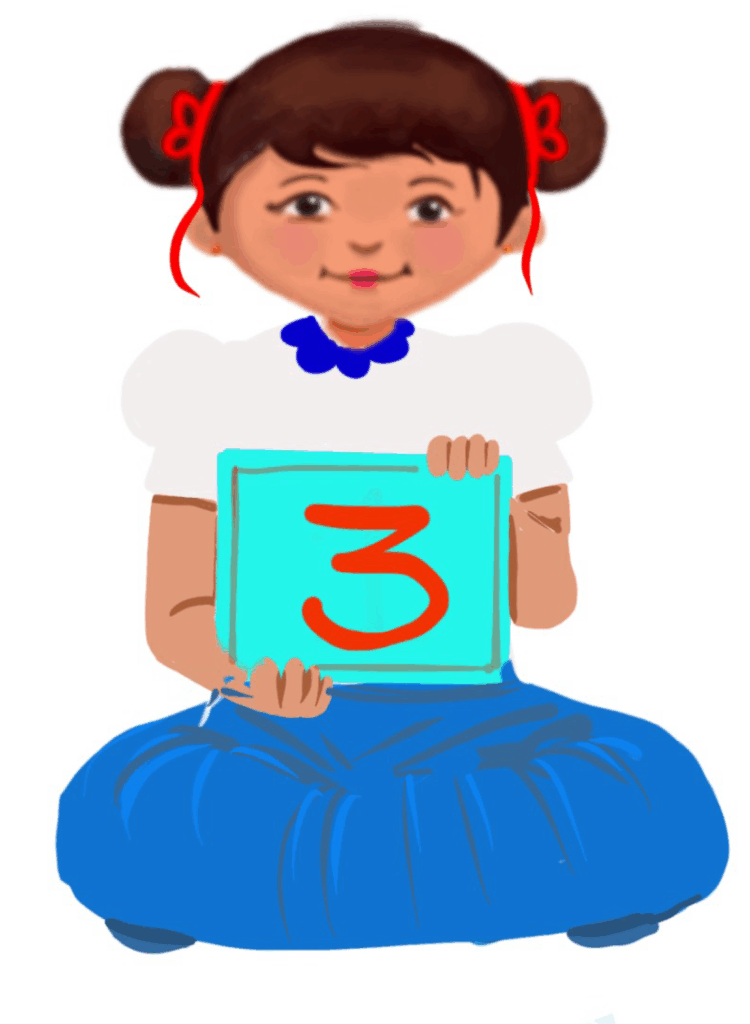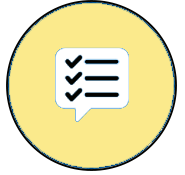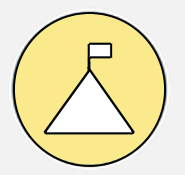
Introduction to MS Word 2010
Class 3
 Objective
Objective
Students will be able to open, create, save and print MS Word documents.
 Prerequisites
Prerequisites
Students should have…
- basic computer skills and should be able to navigate the computer
- developed the motor skills to type on the keyboard correctly
- developed some typing skills
- developed reading and writing skills
- developed hand-eye coordination
- be able to focus for an extended period to complete the activities
- the basic knowledge of how to switch ON and shut down a computer, logging on and logging off, switching windows, etc.
- prior knowledge of the parts of the computer
 Goal
Goal
All
All children should be able to open MS Word documents.
Some
Some children will be able to open, create and save the MS Word documents.
Few
Few children will be able to open, create, save and print the MS Word documents.
Operational Definition
All – This gives the goal, which is the minimum that the teacher must achieve for all students in the classroom.
Some – This gives the goal that the teacher may try to achieve for some students in the classroom who can achieve the suggested goal over and above the goal stated for ‘All’.
Few – This gives the goal that the teacher may try to achieve for few students in the classroom who can achieve the suggested goal over and above the goal stated for ‘Some’ and ‘All’.
Materials Required:
Technology
- An audio-enabled computer with an internet connection, a smartboard projector, and a screen.
- All devices, like laptops, tablets, and desktop computers, have accessibility features enabled.
- Screen readers like JAWS and NVDA.
- Large keyboards, built-in screen magnifiers, hearing aids, text-to-speech and speech-to-text software.
- Voice recognition software like Siri, Windows Speech Recognition, headsets, etc.
- Student writing or typing tools.
- Webcam or visualiser
- Ensure that MS Word 2010 is installed on the computer and is compatible with the computer’s operating system.
- The computer should have the minimum hardware requirements to run Microsoft Word, which vary depending on the version of MS Word.
- Ensure that the computers and software used for teaching MS Word are accessible to all students.
Teacher Materials
- Whiteboard and markers or blackboard and chalk.
- Pre-teach vocabulary cards, sight words, communication cards and worksheets.
- Lesson videos.
Student Handouts
- Handout 1: Large printed visual step-by-step guides
- Handout 2: Worksheets
Print Preparation
The teacher will print, copy or laminate …
- Vocabulary cards, visual cards, sight words
- Worksheets
Preparation for the Activity:
- All the learning and teaching materials needed for this lesson plan must be ready before the lesson begins.
- Ensure that there are enough copies for all children. Multiple copies can be made by photocopying too.
- Please have the assistive technologies and accessibility features ready for your inclusive classroom.
- Ensure MS Word is easily launched on the computers.
- Ensure the children have folders created in the home folder on the network.
Setup for transacting the lesson:
This topic must be taught in the computer lab.
Instructions to the teacher:
- Clear communication: Use clear and simple language when explaining MS Word concepts and tasks. Provide step-by-step instructions with visual aids.
- Assistive technology training: If applicable, provide training on assistive technologies to help students with disabilities use MS Word effectively.
- Encourage students to stop you if they have any questions.
- The teacher could choose the best instructional material provided to accommodate different learning styles and abilities. Different formats are provided, such as videos with audio and captions, and printable handouts with the lesson plan.
- A paper arrow that looks EXACTLY like the arrow on the screen can be stuck to the mouse for autistic children.
- The computer keyboard can be placed close to the screen.
- Laptops and flat-panel displays with less flicker are suitable for autistic children.
- A rollerball (or tracking ball) pointing device with a separate button for clicking is suitable for autistic children.
Day 1
1. Expected Prior Knowledge
Awareness of the extent of a student’s prior knowledge of the topic will help the teacher plan and deliver the lesson appropriately.
This could be assessed through the provided worksheet.
Students should
- know the vocabulary (words/meaning of the words/spellings/pronunciation of the words as per the requirement of the lesson). This chapter uses words like create, save, close, open, and processor to explain the concept.
- understand ‘open/close’ and ‘create/save’.
- be able to recall the concept of ‘open’ and ‘close’. The teacher could make the children open and close their books/compass boxes, etc. The teacher could ask the children to make an imaginary ball/house/favourite toy in their books or in thin air to explain the concept of ‘create’. The term processor is a machine that makes something. For example, a kitchen appliance chops and slices food, and so does a food processor.
- be able to recall the concept of ‘save’. The teacher could show a piggy bank and insert a few coins.
The concepts could be taught in the enrichment class for children without prior knowledge. Commonly shared documents listing the needs of a student who requires special attention should be accessible to all teachers. This could be taught to such students with the help of examples and by using a multi-disciplinary approach. (For example, the ‘create’ concept can be taught in Arts and Crafts class).
Worksheet: Pre-Assessment
Enlarged Worksheet: Pre-Assessment
LTM: Pre-teach Vocabulary
2. Bulletin Board
The teacher could make a bulletin board to teach MS Word. Bulletin boards introduce new topics and generate student interest. The bulletin board is to be displayed in the classroom.
LTM: Printables for the Bulletin Board
3. Introduction to MS Word
Greet students and introduce the topic: “Today, we’re going to learn how to use a program called Microsoft Word to type and create documents!”
Have a short discussion with the students. Where have you seen people type on a computer?
Use a large picture of the MS Word icon to show what they’ll be looking for on the computer screen.
Tell students that there are different ways to open MS Word, and they will try them out today.
Microsoft Word is a popular Word processor.
- A Word processor is software.
- It helps us to create, edit and print documents.
- It helps us to write and store text.
- MS Word is used to enter, edit, format, save and print documents.
- A computer company called Microsoft makes it.
- This is how MS Word appears.
LTM: MS Word Window Poster
What can we do using MS Word?
We can type
We can change the
-writing style
-size
-colour of the text.
The text can be
-highlighted in bold or italics
-underlined
-spelling and grammar can also be checked.
Video: What is MS Word?
Video: What is MS Word ISL
4. Uses of MS Word
Video: Uses of MS Word
Video: Uses of MS Word with ISL
Poster: Uses of MS Word graphic organiser
Day 2
5. Opening MS Word
- Click on the Start button.
- Click the All Programs option from the menu.
- Click on Microsoft Office from the submenu.
- Click on Microsoft Word from the submenu.
Video: Opening MS Word
Video: Opening MS Word 2010 with ISL
Video: Opening MS Word 2011
Video: Opening MS Word 2011 with ISL
LTM: Shortcuts on how to open MS Word
LTM: Steps on How to Start MS Word
Adaptations and Modifications: Open the Word document using the keyboard audio
Instructions to the teacher:
The steps to start MS Word differ for different operating systems and versions.
Activities have to be repeated till the students master them.
Day 3
6. Demonstration: How to Open MS Word using various methods
Aim: To open MS Word Application
Materials needed:
Computers with MS Word installed
A projector or interactive whiteboard for demonstration
Large printed visual instructions or play a video
Headphones (if using audio and video instructions)
A peer, if needed
Procedure:
Step 1
Teacher’s Role:
Project your computer screen so all students can see.
Option 1: Using the Start Menu
Click on the Start button (show the icon).
Find and click on Microsoft Word from the list.
Option 2: Using the Search bar
Click on the search bar at the bottom of the screen.
Type ‘Word’ and then click on the Microsoft Word icon that appears.
Option 3: Using the Desktop Icon
If available, double-click the Microsoft Word icon on the desktop.
Provide large, printed visual instructions for students to follow later.
Step 2:
Students’ Role:
Now, each student tries to open MS Word on their computer.
Encourage students to use any of the options demonstrated.
Peers can guide students who need additional support.
Provide auditory instructions through headphones for students who prefer listening.
Adaptations and Modifications:
For students with motor challenges: Use touch screens or adaptive devices to help them interact with the computer.
For students needing extra support: Have a peer buddy assist or use a step-by-step voice guide.
Assessment:
Observe each student to see if he/she can successfully open Microsoft Word using one of the demonstrated methods.
7. Components of MS Word
Video: Components of MS Word
Video: Components of MS Word Window with ISL
Try Me: Components of MS Word
LTM: MS Word Flashcard
Adaptations and Modifications: Audio
Day 4
8. Creating a New Word Document
Video: Creating a New Word Document
Video: Creating a New Word Document with ISL
Try Me: Creating a New Word Document
9. Saving the Document in MS Word
The steps to save a document are:
1. Click the Microsoft Office button. A drop-down menu will appear
2. Click Save to save the document.
or
3. Click on the save button on the Quick Access Toolbar.
4. The ‘Save As’ dialogue box is displayed.
5. Select the location where you want to save the file.
6. Type the document name in the File name box.
7. Click Save.
8. The name appears on the title bar.
Video: Saving the Document in MS Word
Video: Saving the Document in MS Word with ISL
10. Printing a Word Document
Video: Printing a Word Document
Video: Printing a Word Document with ISL
Try Me: Printing a Word document
Day 5
11. Lab Activity: How to Create, Save and Print a Microsoft Word Document
Aim: To create a new document in Microsoft Word
Materials Needed:
Computers with MS Word installed
Projector or interactive whiteboard
Webcam or a visualiser
Large printed visual instructions or play a video
Headphones (if using audio and video instructions)
A printer connected to the computers
Pre-printed templates with icons (for ‘Create,’ ‘Save’ and ‘Print’ buttons)
A peer, if needed
Procedure:
Step 1: Introduction
Teacher’s Role:
Explain that today, students will learn how to create a new document in Microsoft Word.
Show a printed or projected image of a blank Word document.
Step 2: Demonstration
Teacher’s Role:
Project your computer screen for all to see.
Option 1: Using the File Menu
Open Microsoft Word.
Click on the File menu at the top left corner.
Select New from the dropdown.
Choose Blank document.
Option 2: Using the New icon
After opening Word, click ‘New’ on the start screen.
Option 3: Keyboard Shortcut (Ctrl + N)
For students who are more comfortable typing, demonstrate how pressing Ctrl + N creates a new document.
Provide large, printed visual instructions showing these steps.
Step 3:
Teachers Role:
Ask the children to launch the Word document. They should then type their name and a sentence or two about themselves.
Observe the children: Are they using two hands? How did they type the capital letter? Did they use the shift key or caps lock? Do children press return or enter at the end of lines? How many spaces did the children put in between the lines?
Step 4:
Students’ Role:
Each student tries to open Microsoft Word and create a new document on their computer.
Encourage them to use any of the methods they prefer (clicking, searching, or using a keyboard shortcut).
Peers should support students who need additional help.
Provide verbal instructions through headphones for those who prefer listening.
Step 4: Teacher’s Role:
Upper and lowercase/Space/At the end of a line
Demonstrate the following:
a) Using two hands when typing.
b) Typing capitals by holding down the shift key with one finger and typing with the other.
c) Explain that the caps lock is only used when you need to type capital letters.
d) Use one space between each word and a space after a full stop.
e) How text moves down a line – they do not need to press return or enter at the end of a line.
Use a webcam if possible. Arrange the text and video side by side on the screen so the children can see both. (Use the Windows + arrow keys to snap the windows left and right)
Step 5: Hands-on Practice
Students’ Role:
Once the new document is created, students can type their names or write simple sentences. Alternatively, please provide them with simple words or sentences to type. E.g. My name is Rahul. I like mango.
Children can also type a story or something they have done themselves.
Peer support or teacher assistance can be provided for students needing extra help.
Step 6:
Teacher’s Role:
Ensure children use the following: Both hands, shift and space keys.
Step 7:
Teacher’s Role: Demonstration
Explain that today, we will learn how to ‘Save’ and ‘Print’ a Word document.
Show pictures of a Blank Word document, the Save icon, and the Print icon to familiarise them with what they’ll be doing.
Step 8: Saving the Document
Teacher’s Role:
Demonstrate the different ways to save a document:
Option 1: Save
Click the Save icon (a picture of a disk) at the top of the screen.
Option 2: File Menu
Click File, then select Save As to choose a location and name for the document.
Option 3: Shortcut (Ctrl + S)
Show how pressing Ctrl + S on the keyboard quickly saves the document.
Guide students on how to name the document and save it in a specific folder (e.g. ‘My First Document’ on the desktop).
Step 9: Hands-on Practice: Saving the Document
Student’s Role: Each student saves their document using their preferred method. Peers to help those who need extra support.
Step 10: Printing the Document
Teacher’s Role: Show students how to print their documents.
Option 1: Print
Click on the Print icon on the toolbar.
Option 2: File Menu
Click File, then select Print.
Option 3: Shortcut (Ctrl + P)
Show how pressing Ctrl + P brings up the Print menu.
Demonstrate how to select the printer and press the Print option to send the document to the printer.
Explain that they will collect their printed document from the printer once it is ready.
Step 11: Hands-on Practice: Printing the Document
Students’ Role: Each student prints their saved document.
Guide them to the printer to collect their printed documents. Peers to assist with printing if needed.
Adaptations and Extensions:
For students with motor challenges, provide touch screens or adaptive keyboards.
For students who need extra support, provide extra one-on-one guidance or a pre-recorded step-by-step audio guide.
Extension: For students ready to advance, introduce how to type simple sentences or paragraphs.
Wordwall: Open MS Word
Wordwall: Components of the MS Word Window
13. Assistive Technologies and Adaptive Devices
Assistive Technologies and Adaptive Devices
Teacher Resource Document
| Source and Attribution of images: All images used in the above Assets and Aids are originally created. |
| This digital material has been developed by the Sri Sathya Sai Vidya Vahini Inclusive Education Project, a unit of Sri Sathya Sai Central Trust, Prasanthi Nilayam, as a collaborative offering in the service of our nation. |